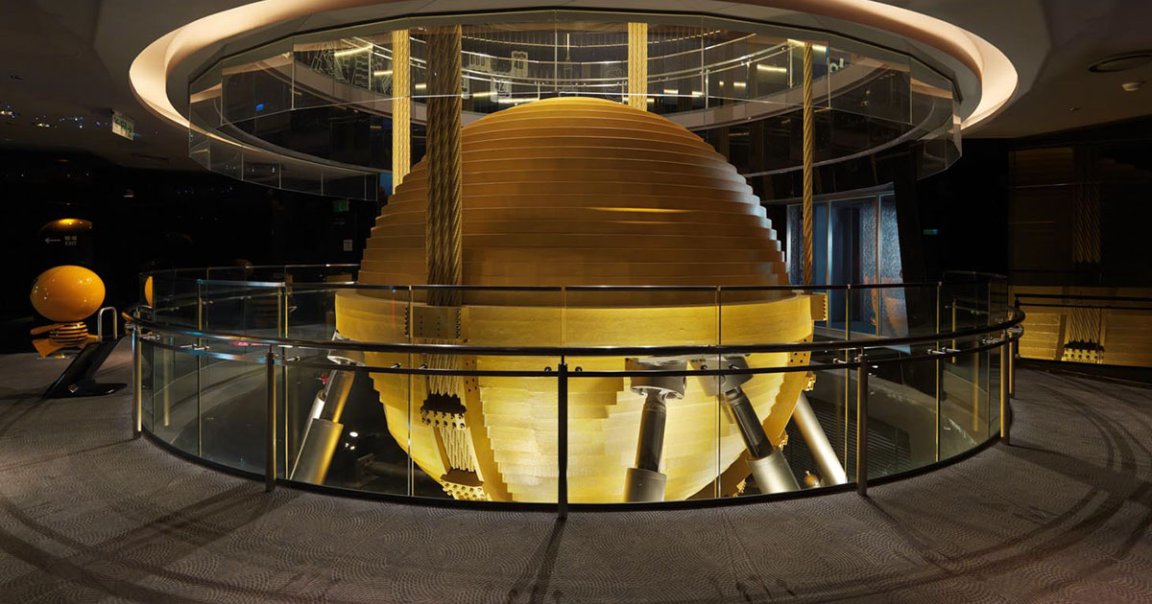
Unwrecking Ball
A 730-ton steel ball suspended inside Taiwan’s iconic Taipei 101 skyscraper protected the structure during the region’s 7.4-magnitude earthquake this week.
The ball is visible to the public on the skyscraper’s 89th-floor observatory and has become a popular tourist attraction. While it’s also a beautiful object in and of itself, it serves an important role as a “tuned mass damper,” which is a pendulum that reduces “violent swinging” and “vigorous shaking” of the building in strong winds — and during earthquakes.
And as CCTV footage of the city’s skyline shows, the system works astonishingly well, stopping the 101-floor tower from significantly swaying — a magnificent feat of engineering that relies only on simple physics.
Seismic Safety
The earthquake, the strongest in 25 years, struck Taiwan early Wednesday morning, killing at least nine people. Many structures fared far worse than the skyscraper, with videos showing several mid-rise buildings collapsing.
Taipei 101, however, was well equipped to survive the earthquake — and not just due to its massive, suspended dampener. The building’s foundations are connected to the ground below via 380 piles that were driven over 260 feet into the ground and almost 100 feet straight into the bedrock.
A video shows the damper dramatically swaying during a 6.8-magnitude earthquake in 2022.
Plenty of other tall structures also rely on tuned mass dampers, which can sway side to side to counteract oscillations caused by earthquakes. Other approaches include diagonal braces between floors, shear walls that take the brunt of the forces, and dampers that physically reduce vibrations.
A particularly complex approach called “seismic base isolation” involves disconnecting an entire building from its substructure — in some cases literally putting it on rollers — to allow it to move more freely during seismic activity. This approach has already been implemented in several major municipal buildings across the US.
Thanks to Taiwan’s location right on top of the “Ring of Fire,” an extremely seismically and volcanically active region along the Pacific, it likely won’t be long until the next earthquake hits. But thanks to some clever engineering, those visiting the city’s iconic tower will be safe.
More on seismology: The Earth’s Crust Flipped Upside Down in This Spot, Scientists Find